https://www.thearmorylife.com/bridgets-ronin-shed-hunt/ May 8th, 2020 BRIDGET FABEL
Every spring, shed hunting quickly becomes my favorite hobby. Don’t know what that is? Shed hunting is the act of hunting and searching for elk antlers when they fall off the elk’s head. Bull (or male) elk shed their antlers naturally throughout the month of March. At this time elk are living in their winter range. Winter ranges often involve lower elevation areas with good feed, water and less snow. Check out my video about my shed hunt at the top of the page (article continues below).
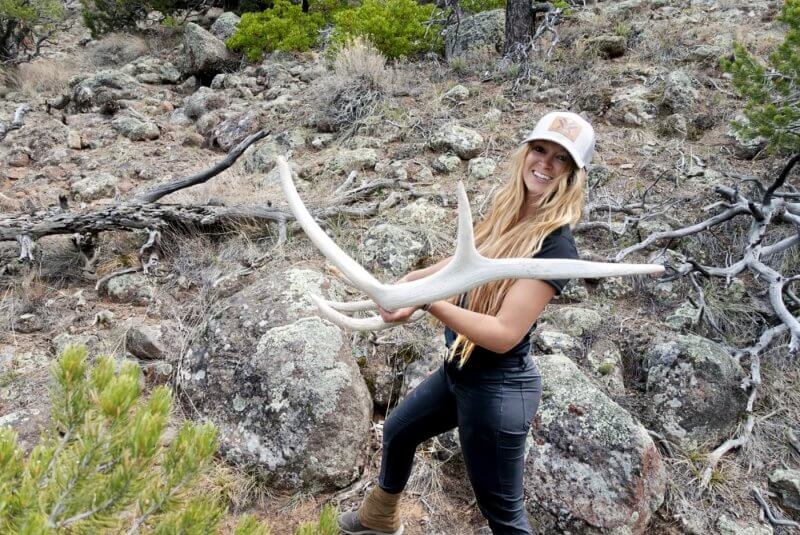
Bridget enjoys shed hunting for elk antlers, and can find some really impressive examples!
After elk shed their antlers they begin growing them back in velvet. Their velvet antlers are growing from spring through the summer and finish up around late August. Here the elk begin rubbing their velvet off on trees and they embrace their hard horn form in time for the rut. The rut takes place in September. At this time, you can hear elk bugling through the woods trying to attract cow elk as mates. After the rut, elk go to their winter range, shed their antlers in March, and the cycle repeats annually.
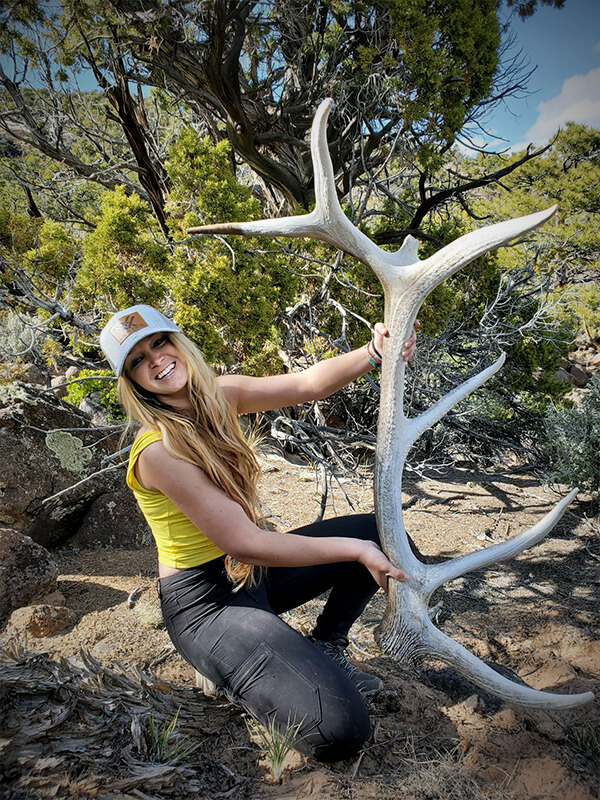
Elk antlers can grow to be quite large and sizable.
Elk antler growth is controlled by many environmental factors as well as genetics. Until the bull reaches the later years of its life, the antlers tend to grow back larger and in a similar shape as the antlers that it shed.
On the Hunt
The first step to finding shed elk antlers is finding where elk naturally winter. Next, start hiking in the areas that elk are shedding. You will know you are “in the zone” when you start seeing fresh elk scat, tracks and rubs on trees. I like to start my hikes early in the morning and I often don’t get back to my truck until after dark.
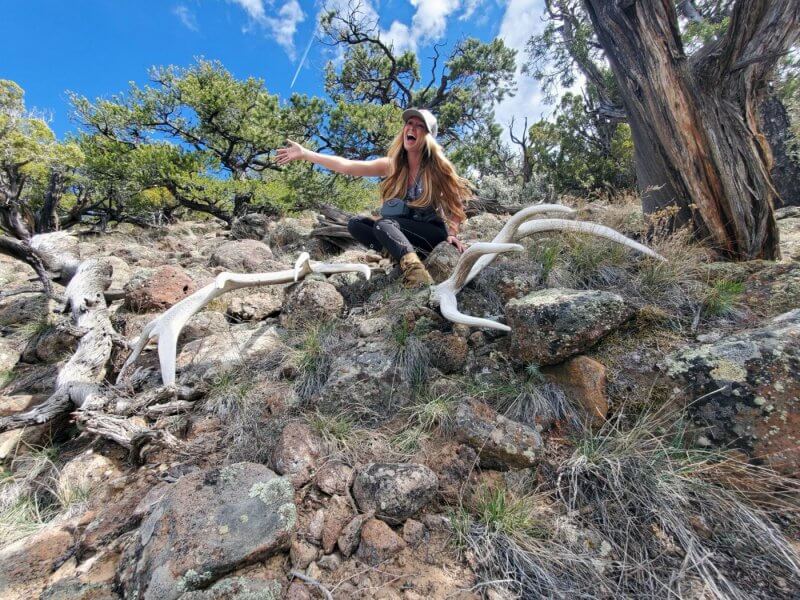
This shot gives you an idea of the size of some of the samples Bridget finds.
I find the most success shed hunting when I am able to hike miles and miles into the backcountry, specifically as far away as I can get from any road. A typical day of shed hunting for me involves 10-17 miles of hiking. Having good hiking boots, hike wear, backpacks and snacks is essential. Due to the remoteness, I believe a self-defense firearm is a must as well — but more on that in a moment.
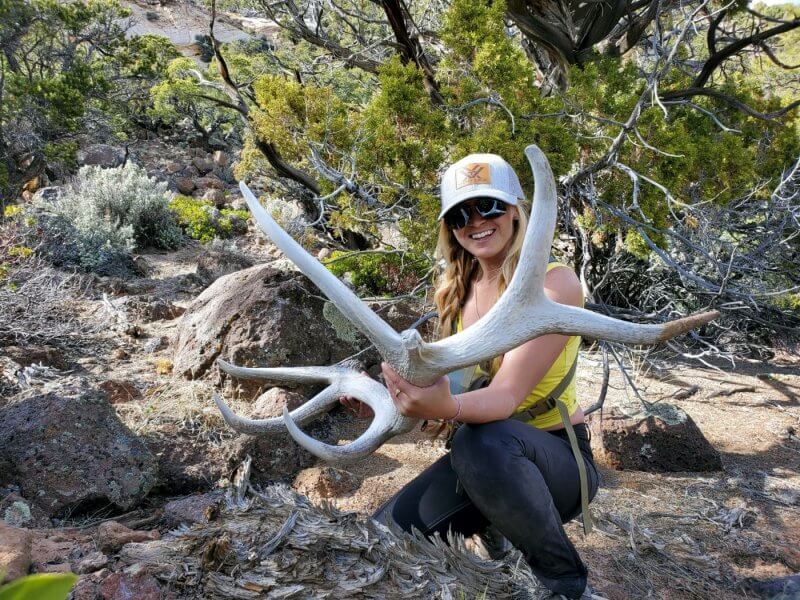
The terrain in which the elk shed their antlers can be quite challenging — but fun for Bridget to traverse!
Elk antlers can last in the elements for 20 plus years! You can find “fresh” brown elk antlers that shed in the current year, hard white antlers that shed a couple years prior or chalk antlers. Chalk antlers often shed layers of the bone off in the form of a dust that is similar to chalk. Elk often winter in the same ranges year to year which makes it possible for you to find multiple antlers off the same bull!
You can see here how challenging a terrain in the area can be.
My Trophy
The antlers I found during this video are a trophy set of elk antlers! Hunters score their elk in inches to compare sizes and records. Boone and Crockett, which judges wild game trophies, requires a size of 360 inches for elk to be entered. This elk shed set that I found scored 373 4/8 inches. It is no doubt a big and mature elk and I imagine he is even bigger this year! People harvest elk that are 400 inches or more in trophy units. It is amazing to think that these majestic animals are out in the woods carrying these heavy antlers on their head through thick country.
A Trusted Partner
I love shed hunting because it allows me to get out there and find their antlers so that I can admire their characteristics as decorations in my cabin forever. Elk antlers are also used for chandeliers, lamps, dog chews, medicines and potions. I will continue to elk hunt in the low winter range until early summer when it simply is too hot to hike 10 plus miles a day.

Bridget’s partner on her shed hunts is the new Ronin Operator from Springfield Armory, a high-quality yet affordable 1911 priced at an MSRP of just $849.
But with all that time out on my own in the wild, I want to make sure I have a way to defend myself. For that, I have recently picked up one of Springfield Armory’s new Ronin Operator 1911 pistols. I feel safe way out in the backcountry with the Ronin on my hip. My Ronin is chambered in .45 ACP, and it has a 7+1 capacity. I like the fact it is a big, capable pistol in a powerful chambering. I also like that it is a 1911, a system with which I am very familiar and is a very safe design. After that my priority is good binoculars like my Vortex Razor UHD 10×42. I carry binoculars in my bino harness and use them often to stop and glass for sheds.
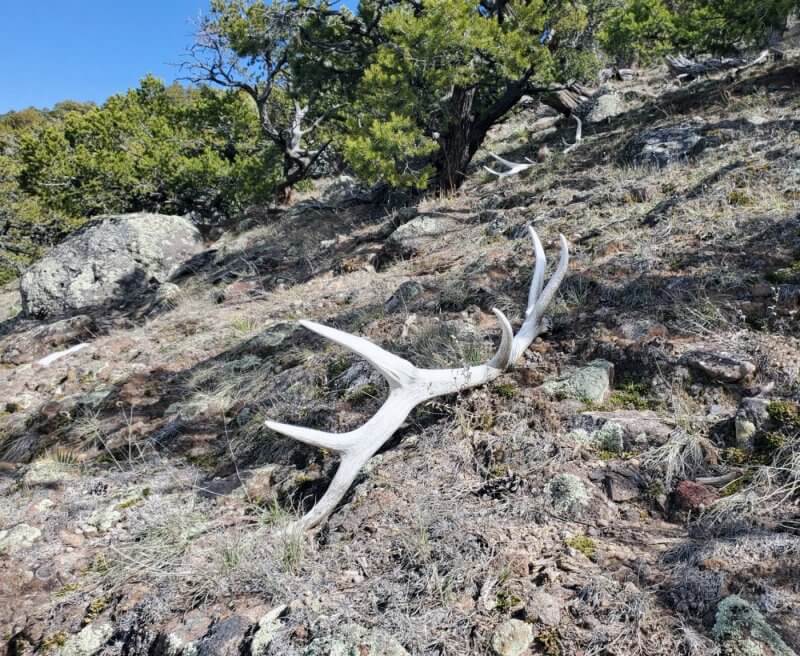
If you have the space and it matches your decor, elk antlers can make quite the conversation piece for your home.
I hope you enjoyed this video and thanks for reading and